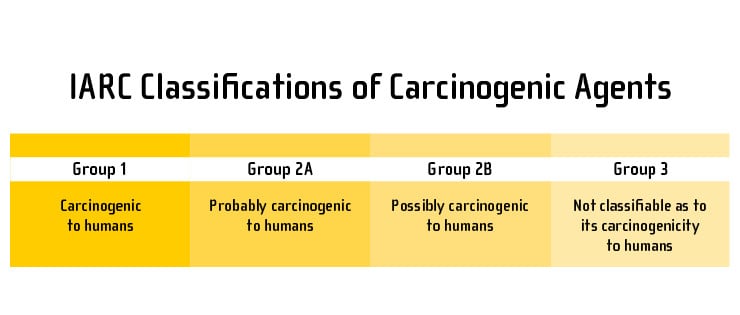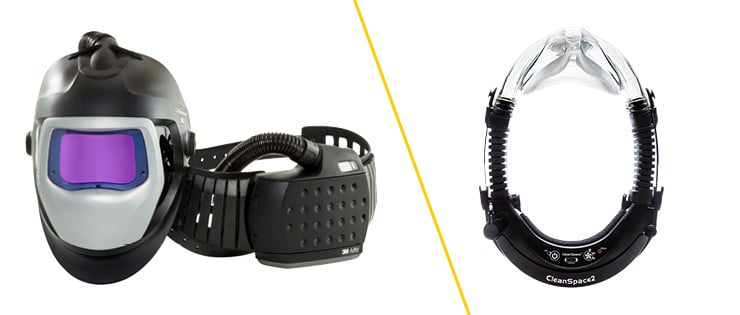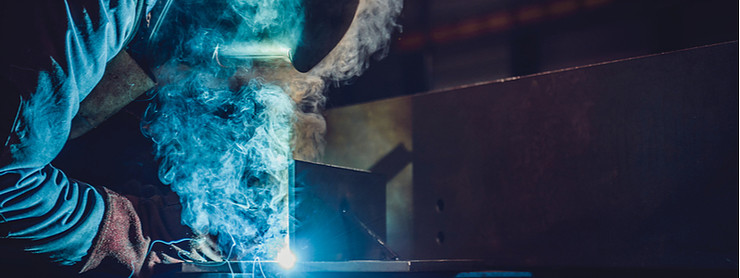What are Welding Fumes?
Welding fume contains a mixture of hot metal and gases that are created when metal is heated above its boiling point. These microscopic particles rise through the air and can be inhaled by the welder or other workers nearby. The oxides contained in the fume vary depending on the type of material being welded, plus any coatings or residues on the metal. The type of welding process, welding rod composition, coatings, ventilation and workplace practices also affect the levels of welding fumes.
Under Australian exposure standards, the average Australian welder not equipped with respiratory protection may inhale 11 grams of welding fume each year. This is 4 times the level of a welder working under stricter regulations in Germany, with a limit of 1.25mg/m3 rather than the Australian limit of 5mg/m3. Both employers and workers are responsible for ensuring a safe working environment and reducing the risks as much as reasonably practical.
The Link Between Welding and Cancer
The International Agency for the Research on Cancer (IARC) has reclassified welding fume from “Group 2B: Possibly carcinogenic to humans” to “Group 1: Carcinogenic to humans”. What this means is that there is sufficient evidence establishing a link between exposure to welding fume and the development of cancer. In this case, there has been a strong relationship found between welding and lung cancer. The greater the exposure to a carcinogen, the higher the risk of developing cancer as a result.
 The individual components making up welding fume can have an effect on almost all parts of the body, including the central nervous system, kidneys, heart and lungs.
The individual components making up welding fume can have an effect on almost all parts of the body, including the central nervous system, kidneys, heart and lungs.
Short-term exposure to welding fumes can result in the irritation of the throat, nose and eyes, as well as cause difficulty breathing, coughing, bronchitis, pneumonia and fluid in the lungs. Dizziness, nausea, loss of appetite and vomiting have also been reported. Those suffering “metal fume fever” may also experience other flu-like symptoms including fatigue, headaches and joint pains.
As well as having the potential to cause lung cancer, long-term exposure can lead to cancer of the urinary tract and larynx, plus damage to the kidneys and nervous system.
If you are experiencing any of these symptoms, contact a healthcare professional.
How to Reduce the Risk
There are a number of ways welders can reduce their exposure to welding fume;
-
All welders should understand the risks associated with the hazardous materials they are working with, and be trained in proper practices to help reduce the risk
-
Welding surfaces should be cleaned regularly to remove any coatings that could increase the concentration of toxic vapours
-
Workers should stay upwind of welding fumes when welding outdoors or in open areas, positioning themselves away from the direction of the fumes. An open working area doesn’t guarantee safe ventilation, so other measures must be taken. When welding inside, welders should try to take advantage of any natural drafts to direct fumes away from themselves and others
-
Local welding ventilation systems like welding fume extraction fans should be utilised in indoor working environments to remove the hazardous gases from the immediate working area. To remove the maximum amount of fume, the welding fume extractor should be located as close to the source of the fume as possible. It is important that exhaust points are kept away from other workers
-
Workers should never weld in a confined space that doesn’t have proper ventilation
-
Consider using alternative options as to the type of welding and welding materials used, as different processes produce varying degrees of toxic fume
- Using correct respiratory protection is essential if work practices and welding ventilation are insufficient to reduce exposure to welding fume. This could include PPE such as Powered Air Purifying Respirators (PAPRs) or supplied air respirators. There are different PAPR welding respirators available that are designed specifically for welding, including a built-in welding helmet fume extractor such as Speedglas Adflo, or a welding respirator mask that sits comfortably under a welding helmet such as the CleanSpace2. To find out which type of welding respirator is the best fit for you and your team, check out PAPR Respirators Explained. It is also important that any respiratory protection is properly fit tested to ensure maximum protection is experienced.

Left: Speedglass Adflo Welding Helmet with a built-in fume extractor. Right: CleanSpace2 Respirator.
For more information regarding the risks associated with welding fumes, refer to the Safe Work Australia Welding Processes Code of Practice, or contact an ATOM Safety Representative today.
